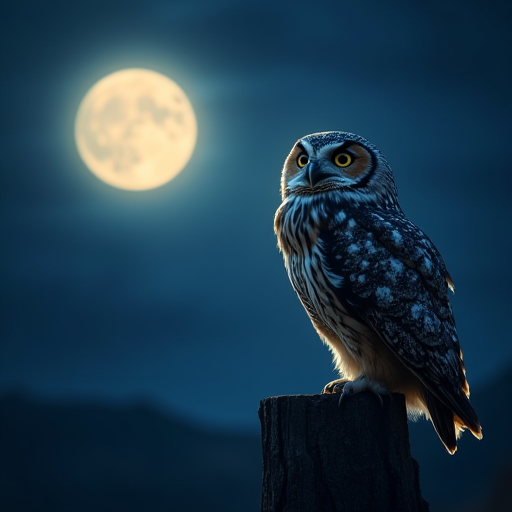
Why Do Owls Hoot at Night?
Owls are fascinating creatures that have long captured the imagination of humans. Known for their distinctive calls, mysterious presence, and nocturnal habits, owls are often associated with wisdom and the supernatural in various cultures. One of the most intriguing behaviors of these birds is their characteristic hooting, which primarily occurs at night. This article delves into the reasons behind this behavior, exploring the biology, ecology, and social aspects of owls' nocturnal hooting.
The Biology of Hooting
Communication
Owls are primarily nocturnal birds, meaning they are most active during the night. One of the main reasons owls hoot at night is to communicate with each other. Owls use hooting and other vocalizations to:
-
Establish Territory: Hooting serves as a territorial call to warn other owls to stay away. Each species of owl has its own distinct call, which helps individuals recognize each other's presence and territory boundaries.
-
Attract Mates: During the breeding season, male owls hoot to attract females. A strong, resonant hoot can demonstrate the male's health and vitality, making him more attractive to potential mates.
-
Maintain Pair Bonds: Once paired, some species of owls will continue to hoot to communicate with their mate, reinforcing their bond and coordinating activities such as hunting and caring for their young.
Echolocation and Navigation
While not all owl species rely on echolocation, some researchers believe that certain vocalizations might assist owls in navigating the dark. The hooting could help them gauge distances and locate obstacles or prey.
The Ecological Aspect of Nocturnal Hooting
Predatory Behavior
Owls are formidable predators. They hunt primarily at night, using their acute senses of hearing and sight. By hooting, they can signal their presence to conspecifics (members of the same species), thus reducing the chance of competition over prey in a given area. This behavior helps them efficiently manage their hunting grounds and optimize their food resources.
Avoiding Predators
Although owls are top predators, they are not immune to threats. Hooting can serve as a warning system. By vocalizing, owls may alert nearby conspecifics to the presence of potential dangers, such as larger predators or human activities that could threaten their safety.
The Social Dynamics of Hooting
Individual Identification
Owls have unique hooting patterns that can identify individuals within a species. This individuality in vocalizations allows owls to recognize each other, facilitating complex social interactions and maintaining social hierarchies within their communities.
Cultural Significance
In human culture, the hooting of owls has been imbued with various symbolic meanings. For some, it is a sign of wisdom and knowledge; for others, it may be an omen or a spiritual message. The mysterious nature of owls and their nocturnal vocalizations contribute to their role in folklore and mythology across different cultures.
Conclusion
Owls hoot at night for a myriad of reasons, ranging from practical functions like territory establishment and mate attraction to ecological roles such as hunting and predator avoidance. Their vocalizations are a vital part of their survival strategy and social structure.
As we continue to study these enigmatic birds, we gain a better understanding of their behaviors and the intricate ways they interact with their environment. The hoot of an owl is more than just a sound in the night; it is a complex communication tool that plays a crucial role in the life of these fascinating nocturnal predators.
